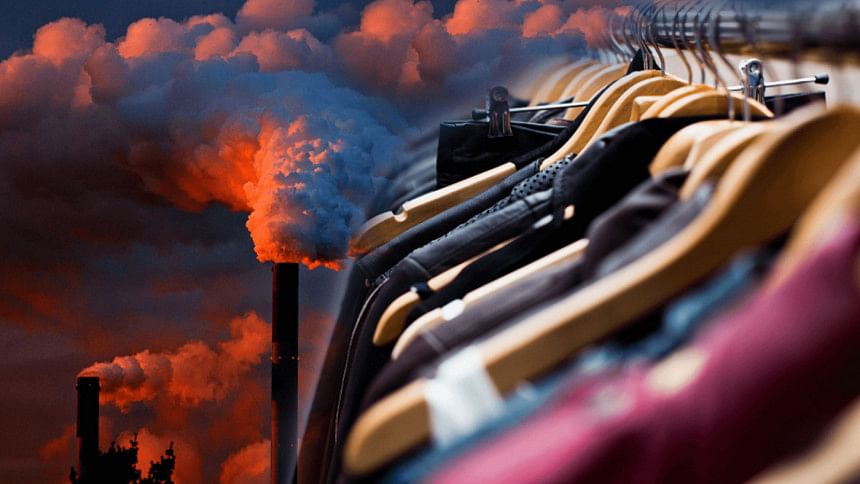Distant climate actions are dooming global apparel industry

We are hearing a lot of businesses and brands make pledges about the climate at present. Along with pledges to cut climate emissions, there is talk of cutting water use, chemical use, and addressing a range of other supply chain issues. The overall goal is to improve sustainability.
But are we doing enough? We've been talking about the climate issue for many years. We are all aware of the risks that the earth is facing and we keep being told that "business as usual" is no longer an option.
In the meantime, businesses set distant, often vaguely worded, targets. Sometimes these targets are two to three years away, but in many cases, businesses are setting targets for 2030, 2035, 2040, and beyond. This is way, way too late. We lost the luxury of setting these far-off targets a long time ago. High-level climate talk is one thing, but more than anything, we now need meaningful, concrete actions on the ground. Not in the future, but now.
"Climate change will impact the way we will do business moving forwards," we hear people say at high level meetings. Well, climate change is already impacting business in the global textile industry, and on quite a significant scale if one begins to connect the dots.
In Australia, the cotton production in 2019-2020 was almost a quarter of the size it was two years ago, due to the impacts of drought and reduced water allocations. Australia might only account for about 4 percent of the global market for cotton but, nonetheless, in an average year, the country produces enough cotton to clothe 500 million people around the world. Australia is no stranger to drought conditions, but last year has been dreadfully difficult for sheep farmers, even by historical standards. Many local observers believe climate impacts are at play.
There is more. Back in June last year, it was announced that India's cotton imports are likely to rise by 80 percent this crop year due to a short supply of quality material for textile mills. Data compiled by Cotton Association of India (CAI), forecasts raw cotton import at 2.7 million bales for the season, compared to 1.5 million the previous year. The CAI said the major reason for a forecast rise in imports was drought in the major growing states of Maharashtra, Telangana, Gujarat, and Andhra Pradesh, while the quality of late picked crop was poor due to the lack of moisture in the field.
This really is a global issue. In the US, many cotton growers have been hit by hurricanes for three years running. Has there ever been a time where the impact of climate on business has been so clear and obvious? It is hard to think of one. This comes back to the point made earlier about this no longer being an issue which we can be discussing in a future tense. Climate impact is happening right here, right now.
What's more, with the above we have only looked at examples where extreme climate conditions have potentially impacted textile supply chains.
What about the other way round? What about how textile supply chains impact climate? We all know there are major issues to address here. We know polyester, the most commonly used fibre in textiles, has seen a doubling in production since 2000. We also know a polyester shirt produced from virgin polyester has a significant carbon impact—around 5.5 kg CO2 according to some studies.
We know the impact that cotton products have, with their huge use of water use right though the supply chain, during cotton growing, processing and the transformation of cotton into garments. The message, then, is that not only are climate impacts here, but textile supply chains continue to make them worse—and at an accelerating rate as clothing output increases in line with population expansion and the growth of the middle classes.
Climate impacts are happening and textile supply chains are making them worse. So, long-distant target setting, even medium-distant targets, are becoming irrelevant. We need answers, and we need them to be implemented, not in 10 years' time but today.
The technology and know-how is ready and waiting, so our whole industry, our complete value chain, should be using it. Technology is available that allows us to dramatically reduce the amount of water used in textile processing. There is CO2 dyeing technology which uses no water at all. It has been around for years.
Why is it not being used? There are safer textile chemicals which have less or no impact on the environment, yet parts of the industry still go with the cheapest available from un-reputable suppliers, which are often harmful. Why? Recycled polyester is vastly available. Why is virgin polyester still used in such abundance? I could name many more examples, but hopefully readers get the point.
Each and every one of us in the value chain should be looking within and recognising that, where climate is concerned, if we are not part of the solution, we are part of the problem.
Mostafiz Uddin is the Managing Director of Denim Expert Limited. He is also the Founder and CEO of Bangladesh Apparel Exchange (BAE). Email: mostafiz@denimexpert.com

 For all latest news, follow The Daily Star's Google News channel.
For all latest news, follow The Daily Star's Google News channel. 



Comments